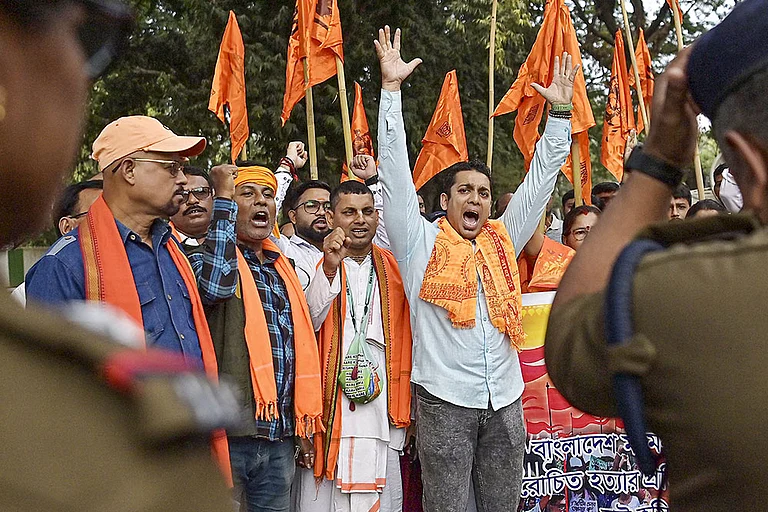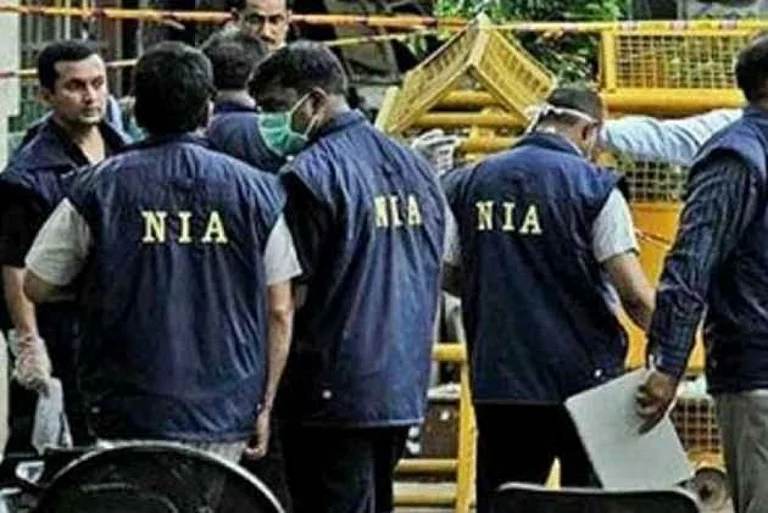Shahidul Alam’s retrospective volume Singed but not Burnt, edited by writer-curator Ina Puri, is a work of great value in foregrounding the role of art in deconstructing and reaffirming meanings of protest, activism, knowledge paradigms, discourses of power, and post-colonial ethics.
To ‘rethink’ the Bangladeshi photojournalist, teacher, and artist-dissenter is to conceptualise the radicalisation of Alam’s dogged valorisation of the moral dimension of art as a tool for social justice and human development. Besides underpinning a journey of self-discovery, the volume is a testament to what Shashi Tharoor contends in his foreword to the book, “immense narrative power” depicted with “empathy and dignity.”
Named Time Magazine Person of the Year in 2018, Alam is known for his unfailing commitment to truth. No wonder, he had to spend 107 days in jail for critiquing the government of his native Bangladesh in 2018 but he remains undeterred in championing the cause of justice. As an indefatigable defender of conscience, he lends voice to his photography school in Dhaka, the Pathshala South Asian Media Institute.
Both the Pathshala and Drik Picture Library embody an emancipatory force to subvert the tyranny of state propaganda machinery hell-bent on eroding spaces for pluralistic thinking.
Alam’s artworks, from early experimental to the later more empirical, superimpose an assimilationist model on the cultural dilemma fraught with denial, ambiguity, and hegemonic exclusiveness. What gains a rare psychological and emotional immediacy is his cultural activism committed to humanising and unifying the forces of disintegration and coercion. His works engage a wider response repertoire in interrogating issues of freedom and bondage, peace and anarchy, appropriation and rehabilitation.
His artworks are confrontational in provoking acts of intellectual inquiry. What appears to be tangential is not lost sight of in Alam’s radical opposition to signs of infringement and disparity that undermine the nature of objective reality. He challenges majoritarianism and its dizzying heights of rhetoric; he confronts dictators and the luxury of their (mis)interpretative leaps breeding negative biases. He fights to preserve the value of art by overturning ideological orthodoxy and reviving the dwindling faith in humanism. His works propose a moral framework to minimise the severity of the loss of moral compass in a climate of political inertia.
Let me present a few snapshots from the volume. Alam’s camera captures a gamut of events and emotions with astonishing perceptivity. From the graceful fluidity of Floating Forest (1983), Love Swans (1983), and Raindrops on Drik Terrace (1993) to the morbid foreshadowing in Paddy Field (2010), and Gamchha (2010), Alam’s realism resides in verisimilitude and the intensity of presentness. He arrests moments and the metaphysical jolt in Student Protest (2013), Protest Against Rape (2020), and Cry of the Imprisoned (2020) where the centrality of moments confers value on the intensification of quotidian realities as collective action is invoked and infused with a dynamic exhilaration to herald a political change.
The photographs Muddied Shoe (2014), Nurjahan’s Grave (1993) are poignant reminders of gendered violence and blatant violation of human rights. Besides the elegiac tone evoked, a vituperative attack is launched on the frigidity of governance where victimisation goes unabated and perpetrators are exonerated.
Be it gratuitous violence against humanity or extremes of corruption, Alam’s artworks offer portentous references to a future ideological bankruptcy without descending into abstract philosophising. This quality of prophecy mitigates the burden of uncertainty the common people are subjected to. In the face of ideological regression, Alam’s artistic vision yields insights into the synergy between the human condition and art as a mode of knowing where the goal of art is to heal humankind and prevent forces that exile humankind from its true inheritance of moral consciousness.
When the presiding spirit is empathy and introspection, his photographs, Bait Ur Rouf (2017), Prayer Line (2017), and Half Moon and Prayer (2017), manifest the article of faith as an act of love for the universe in reaffirming the true nobility of divine grace. The photographs not only suggest an urge to minimise the gap in the adversarial relationship between a non-believer and a faithful but also advocate the need to get this binary opposite merged imperceptibly leaving behind a transcendental immanence to linger in human consciousness. Pitted against the perils of idolatrous self-worship, these photographs underscore the aspiration for a quality of life that empowers a community. This aspiration is a search for the purity of an individual conscience, a conscience that nourishes an imperishable hope for redemption.
While Onno Chokhe Dekha [Seeing with Another Eye] (1992) celebrates the subjectivity of women photographers and their joyful independence, Woman Wading in Flood (1988) and Earth Digger (1993) applaud the spirit of resilience against adversities. For journalists as truth-seekers, Alam identifies the malady of fearless journalism where the media, deliberately orchestrated, collapses the distinction between falsehood and truth.
Alam imprints his ideological take on the repressive nature of expression and his photographs become a cinematographic performance of ‘marginalised’ faces capturing the subtleties of the relationships between symbolic representation of protest and the moral imperative induced. Alam employs a scornfully humorous sense of incongruity in his photographs, Paris Feet (2002) and Prince Moosa Bin Shamsher (1997). Ironically, this is economic injustice in gay abandon! This appalling show of disparity spurs Alam to action and he contends: “…it was the energy in the streets amidst the teargas and the bullets that fed my soul.”
To read Singed but not Burnt, as a discursive repertoire in which the individual and the institution get intermingled in generating a Catholicity of ideas, is to invoke Alam’s discriminating sensibility to not only question the status quo of the powers to be but also to prick the bubbles of the treason of silence in provoking the role of a vibrant and vigilant civil society. Alam is a custodian of human conscience in his ironic condemnation of human rights violations, political biases, and ideological myopia. His photographs exude the resounding music of hopeful humanity amidst the hell-raising cacophony of relentless othering.
Singed but not Burnt confirms the emancipatory possibilities of art to rekindle the flame of change in sustaining a just and humane society. Puri curates this retrospective volume with a wealth of telling details of events that encompass the developmental trajectories of Alam’s oeuvre.
Singed but not Burnt stands out as a universal allegory of post-modern times in resonating with contemporaneous concerns. While teaching Bob Dylan’s poetry, I thought of Alam’s photographs as they both espouse a radical act of seeing that envision to ‘synthesise the inner life of the human being’ with ‘the outer social life’, to borrow words from the writer-thinker Mulk Raj Anand. Clubbing the poet and the photographer, which lends to a considerable space for inter-disciplinary exegesis, I know I can count on Singed but not Burnt to offer my students the breadth and depth of Alam’s oeuvre.
Sudeep Ghosh is an academic based in Hyderabad.
(Views expressed are personal)

























